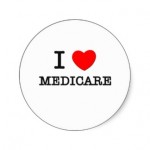 Conference participants wore ‘I Love Medicare’ pins in Calgary.
Conference participants wore ‘I Love Medicare’ pins in Calgary.
Nietzsche might ask
Do you love medicare because patients benefit, or do you love medicare because you benefit?
Do you love ‘free care’ more than patient care?
People can care more about the idea of universal health care than they do about the care patients receive.
They deny data showing
long waits
poor patient outcomes
lack of access
lack of coordination
high cost
inefficiency
lack of control
provider frustration
Their solutions focus on
more control
more funding
more rationing
more cuts to salaries > 100k
more patient education to divert access
They would rather fight for a failed system than fight for improved patient care.
n. An arrogant, stubborn assertion of opinion or belief
dog-ma-tism n.
1. positiveness in assertion of opinion especially when unwarranted or arrogant
2. a viewpoint or system of ideas based on insufficiently examined premises
Medicare dogmatism will guarantee mediocrity at best.
We need a system that:
puts patients’ needs first
makes patient experience central to funding
gives patients great access
offers patient choice
guarantees quality care (Quality should be a given)
demonstrates business excellence
attracts the best leaders
rewards great outcomes; not mediocrity
aligns incentives for every provider
rewards grass-roots provider innovation
gives control to health-care experts
This can happen in a publicly funded system, but it will never happen if people resist change.
We need to stop thinking that health-care is so special, complicated and unchangeable.
Do we love medicare more than patient care? Can we have an adult conversation about change? What do you think?

